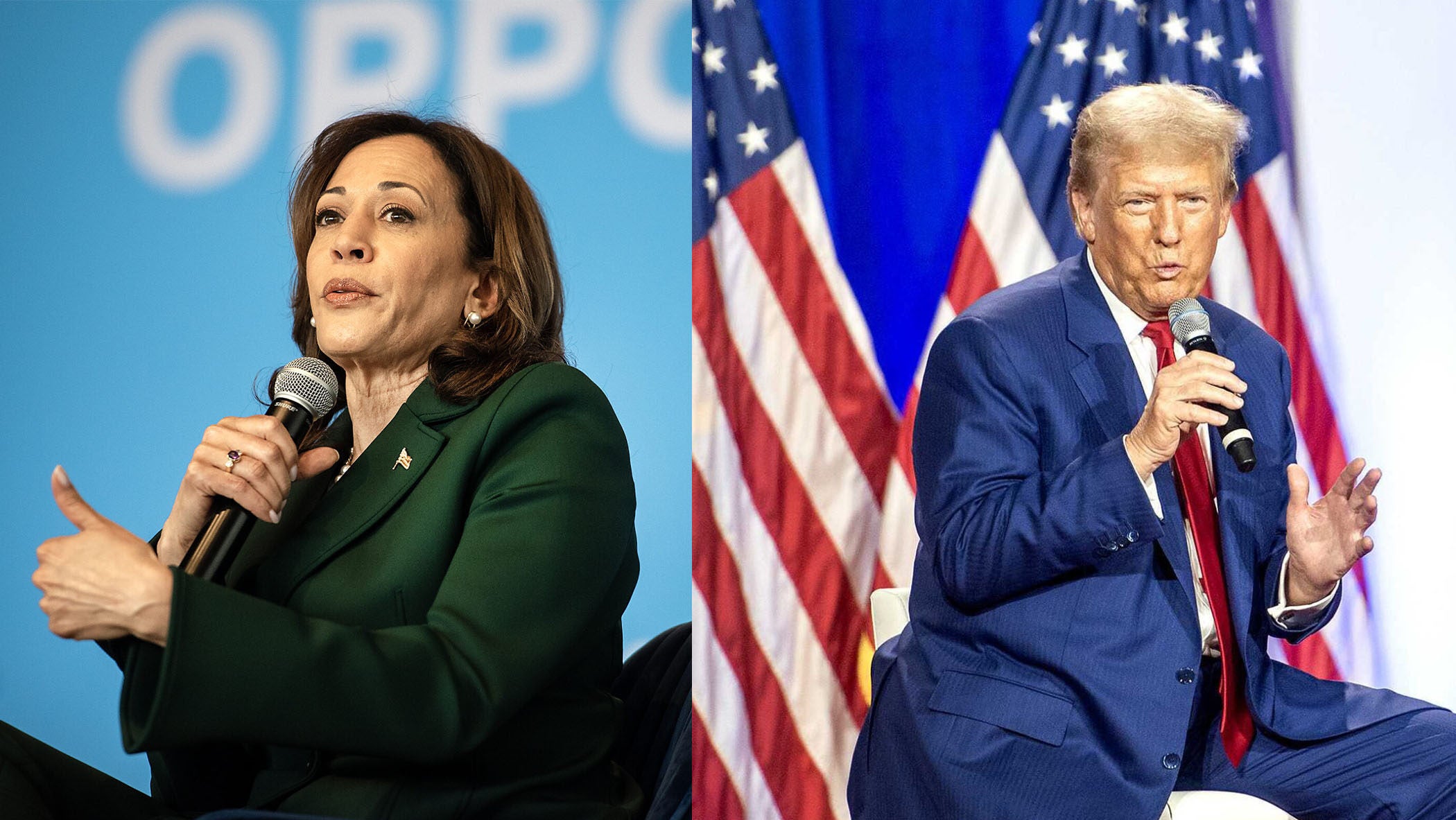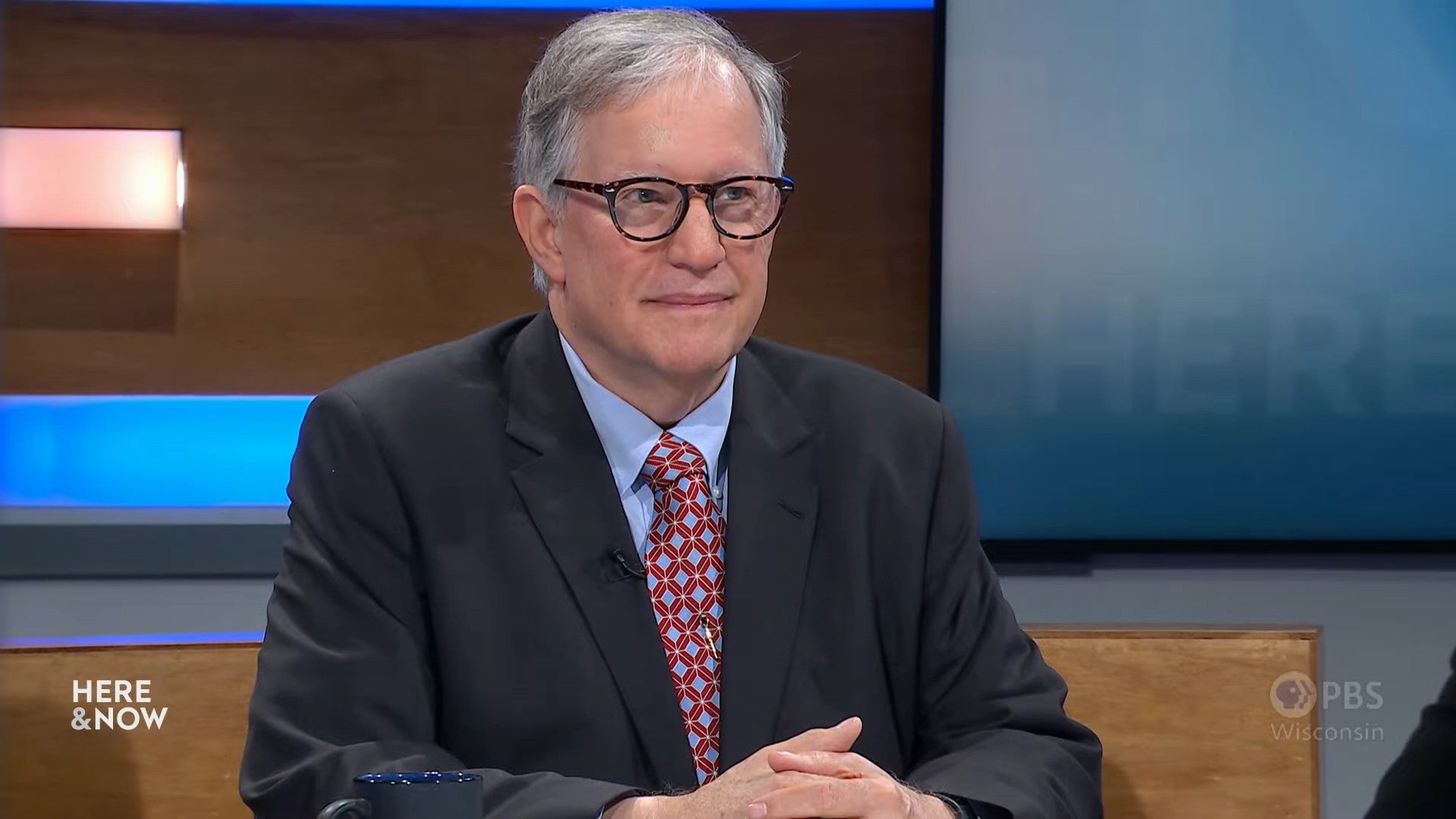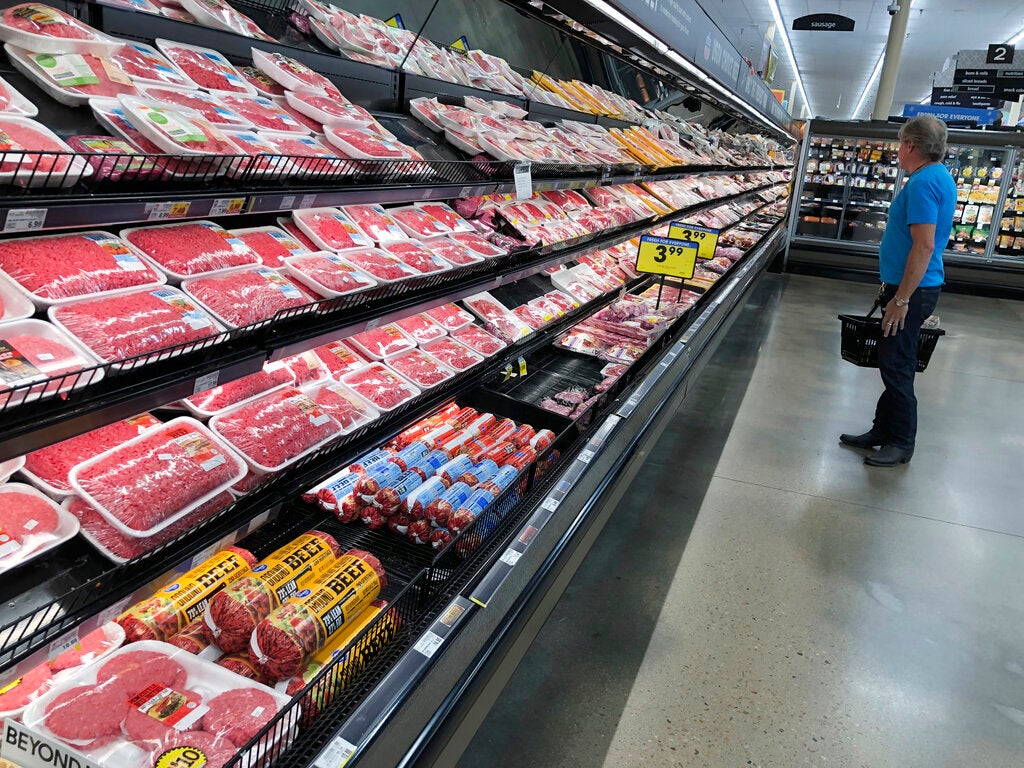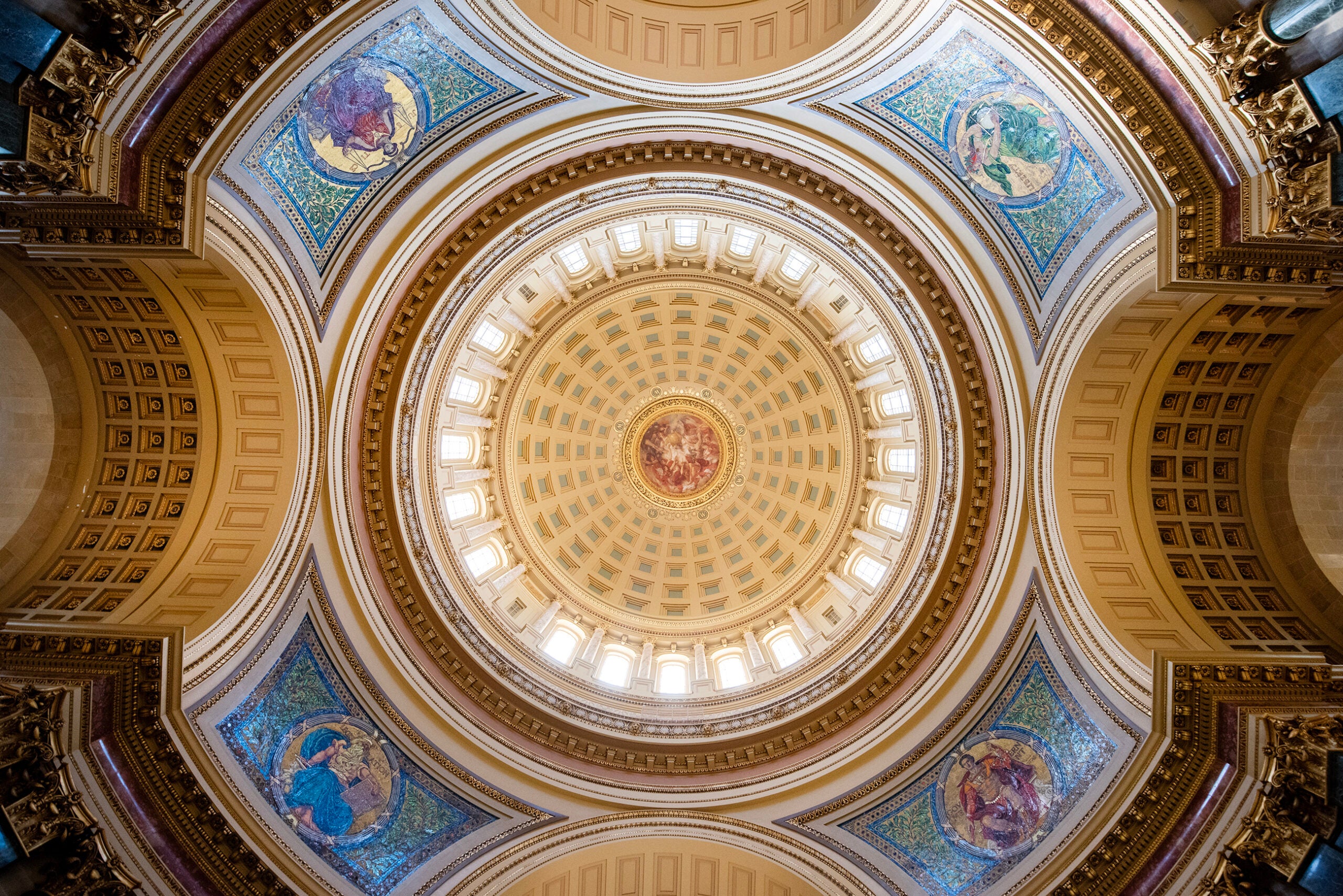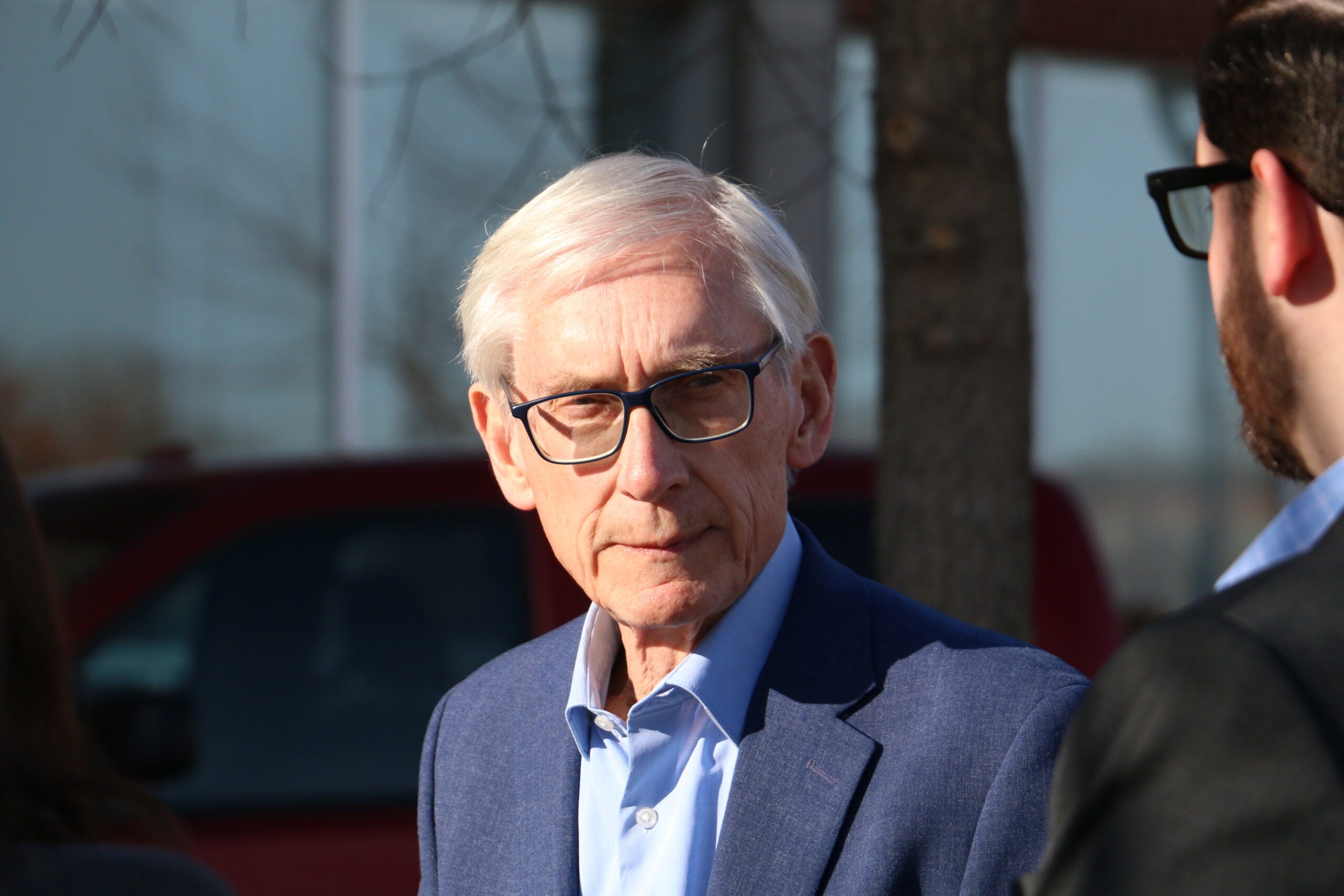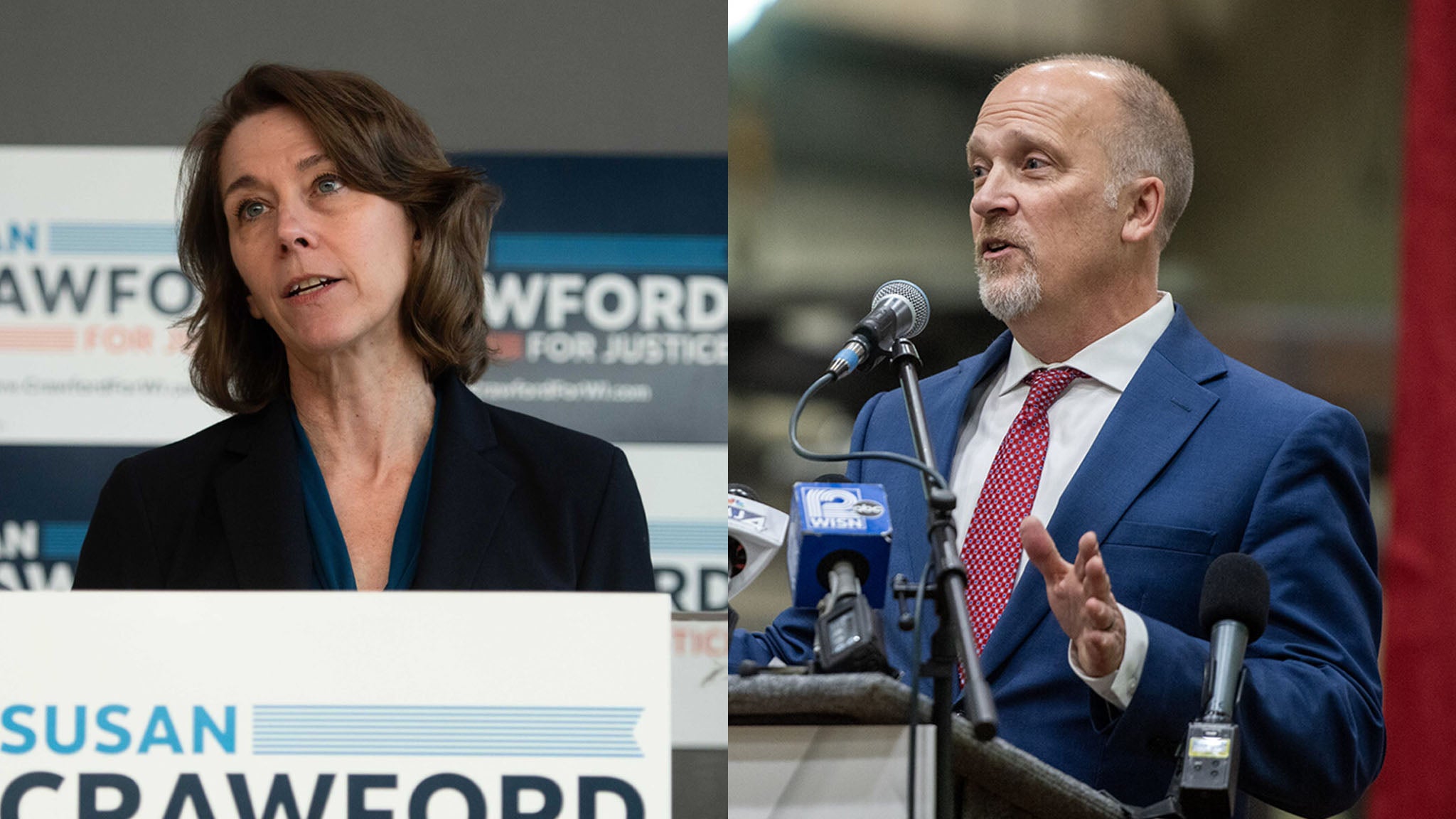A day after former President Donald Trump and Vice President Kamala Harris went head-to-head in what is expected to be their only debate of the presidential cycle, new polling from the Marquette University Law School poll shows Harris pulling slightly ahead of Trump in swing state Wisconsin.
The survey spans registered and likely voter sentiment immediately after the Democratic National Convention in Chicago, following a summer of remarkable political upheaval.
Among registered voters, Marquette’s latest poll shows Harris with 52 percent of the vote, compared to 48 percent for Trump. Among likely voters, the survey shows the same numbers, 52-48.
News with a little more humanity
WPR’s “Wisconsin Today” newsletter keeps you connected to the state you love without feeling overwhelmed. No paywall. No agenda. No corporate filter.
That represents a bump in support for Harris from last month, when the two candidates were seen as neck-and-neck.
Marquette’s latest poll surveyed 822 registered voters and has a margin of error of plus or minus 4.6 percent. It was in the field from Aug. 28 to Sept. 5, so it reflects the period of time immediately following the DNC. The sample is 35 percent Republican, 32 percent Democratic and 32 percent independent.
That skews a bit more Republican than previous surveys, said Charles Franklin, who runs the poll.
“These changes are all inside that margin of error,” said Franklin. “But having said all of that … looks like Harris is in a little bit better shape this time than last time, and that’s true despite it being a slightly more Republican sample than it was last time.”
It’s the first survey since the last week of July and the first since the addition of Minnesota Gov. Tim Walz to the Democratic ticket.
And it reflects a dust-settling period after a cataclysmic summer involving an assassination attempt on Trump, President Joe Biden dropping out of the race and endorsing Harris, the selection of both parties’ running mates and two high-energy nominating conventions — with the Republican National Convention taking place in Milwaukee.
So much competing political energy may have canceled out a big bump for either side, said Franklin.
“In Trump’s case, you had the convention and, of course, the assassination attempt, but then that immediately got stepped on by Biden’s withdrawing and Harris entering the race,” he said. “There was some evidence that the (Republican) convention helped (Trump), but I think he ran into a competing buzzsaw of news in the Biden-Harris switch that overshadowed the convention.”
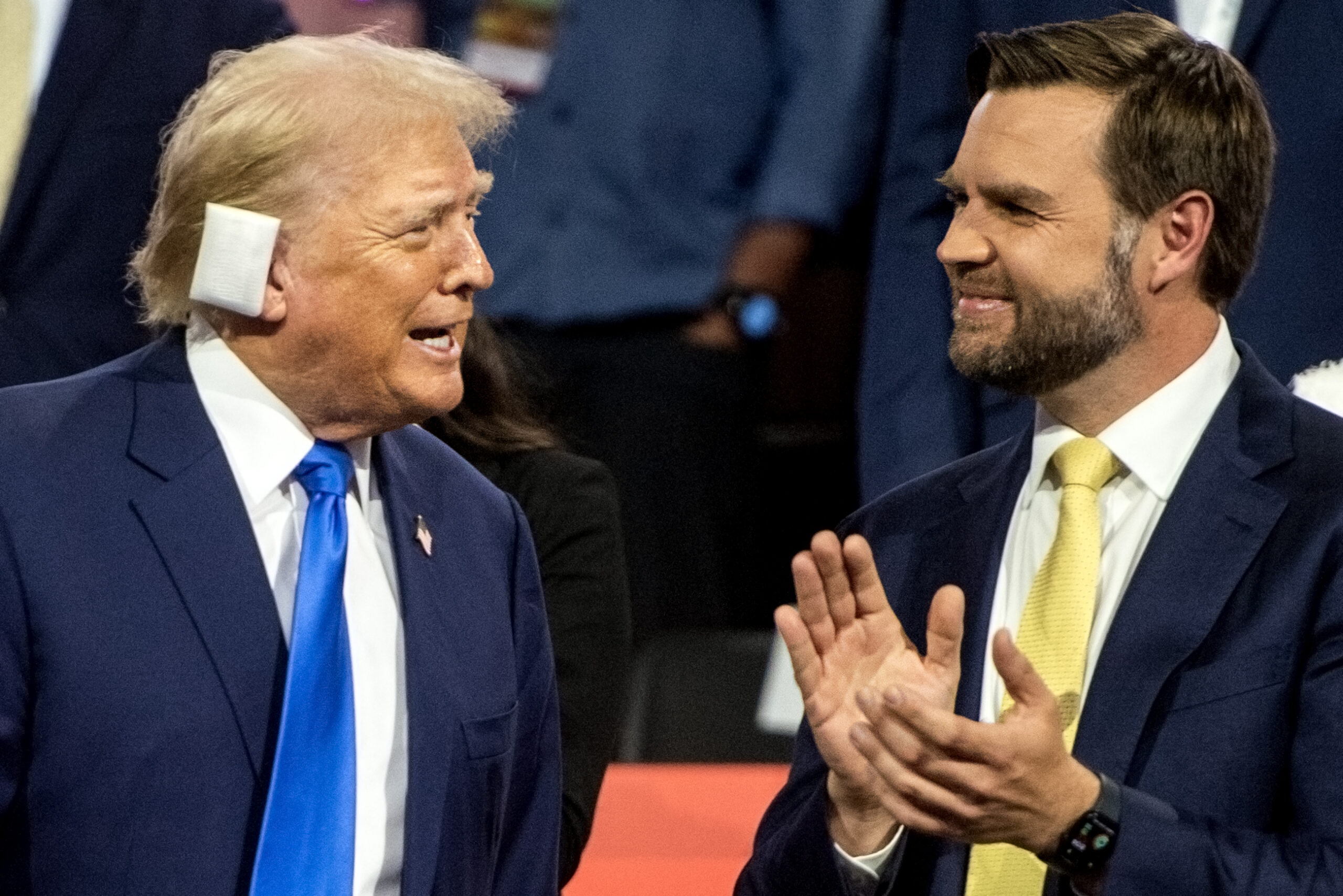
That 4-point advantage for Harris persists when voters are surveyed about their preferences in a race that includes third-party and independent candidates.
Robert F. Kennedy Jr. — who has dropped out of the race and is currently in court fighting to remove his name from Wisconsin ballots — has about 6 percent support, with Harris at 47 percent and Trump at 43 percent. Other candidates Libertarian Chase Oliver, Green Party candidate Jill Stein and independent Cornel West received 1 percent support.
The survey is the first to be held since both campaigns solidified their running mates. Democratic vice presidential nominee Walz received a favorability rating of 43 percent and unfavorability of 37 percent. He was the only figure in the White House race who emerged from the survey with a higher favorability rating than unfavorability rating.
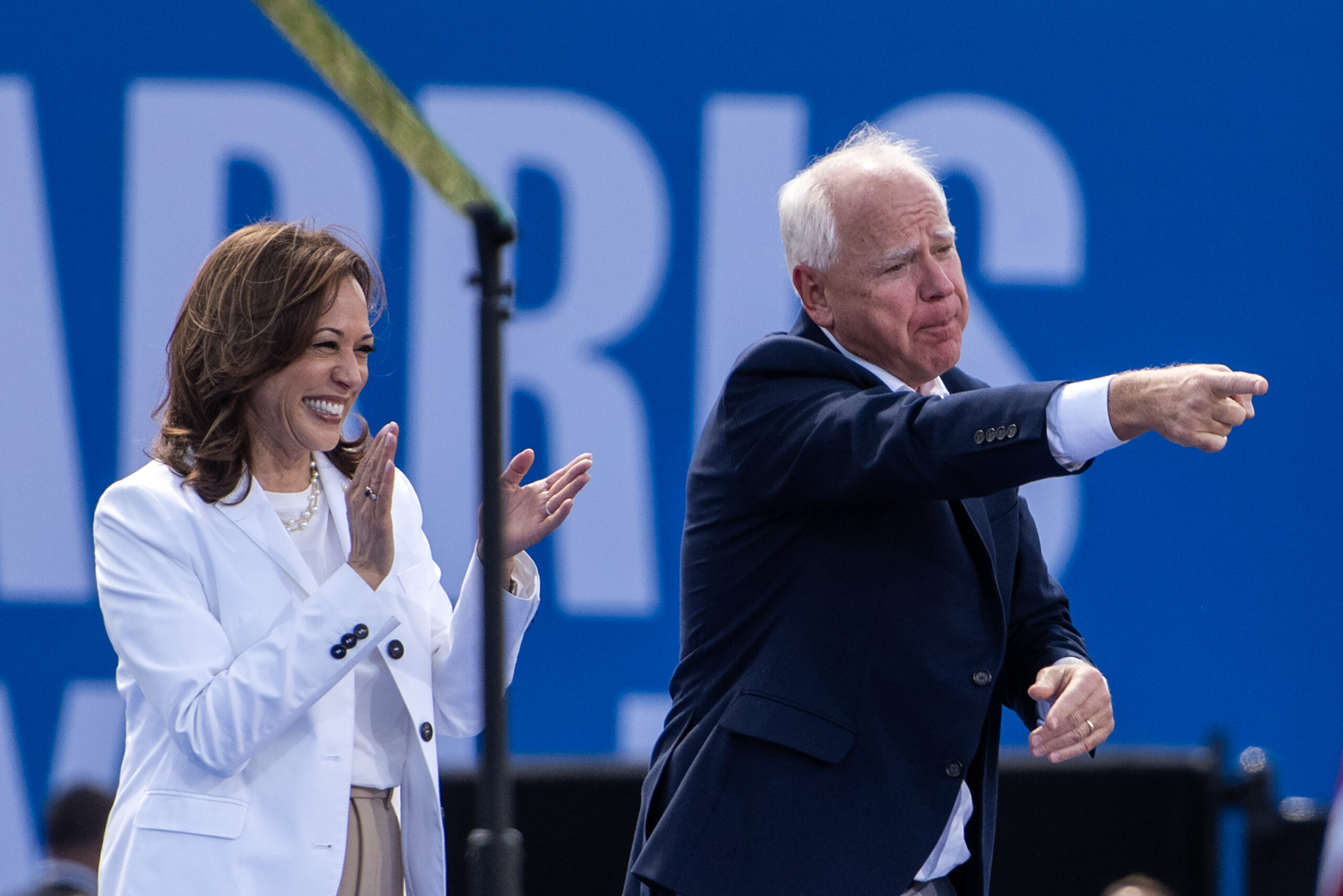
The Republican vice presidential nominee, Ohio Sen. JD Vance, has a rating of 37 percent favorable and 47 percent unfavorable.
When it comes to the issues, 41 percent of Wisconsinites ranked the economy as their top concern, followed by 15 percent with abortion and 12 percent on immigration and border security. Nine percent of voters ranked fair elections and another 9 percent ranked Medicare and Social Security as their top concerns.
But those issue priorities diverge along party lines. Independents and Republicans rank the economy at the top, and Republicans prioritize immigration, too. Democrats rank abortion access as their top issue, then the economy, then Medicare and Social Security.
Shifts in enthusiasm and favorability
After months of voters consistently reporting low enthusiasm for the entire contest, the tides have shifted, with voter sentiment approaching where things typically stand in August of an election year. In particular, Democrats’ enthusiasm has begun to surpass that of Republicans.
“There’s been a big rally in enthusiasm,” Franklin said. “And the biggest thing is what happened by party.”
When Biden was in the race, he led among the least enthusiastic voters, while Trump had big leads among the most enthusiastic voters. In this latest survey, those numbers have shifted, too. Harris now leads among the most enthusiastic voters, 53 to 47, while Trump leads among the slightly or not at all enthusiastic, 64 to 35.
And the numbers of voters ranked as “double-haters” – who don’t support either candidate has declined since July, down to 8 percent from 11 percent.
“It’s love time,” said Franklin.
But that’s relative, as most candidates have higher unfavorability than favorability. Trump has 43 percent favorability compared to 54 percent unfavorability, and Harris is 47 to 51. That marks an improvement for the Democrat since last month.
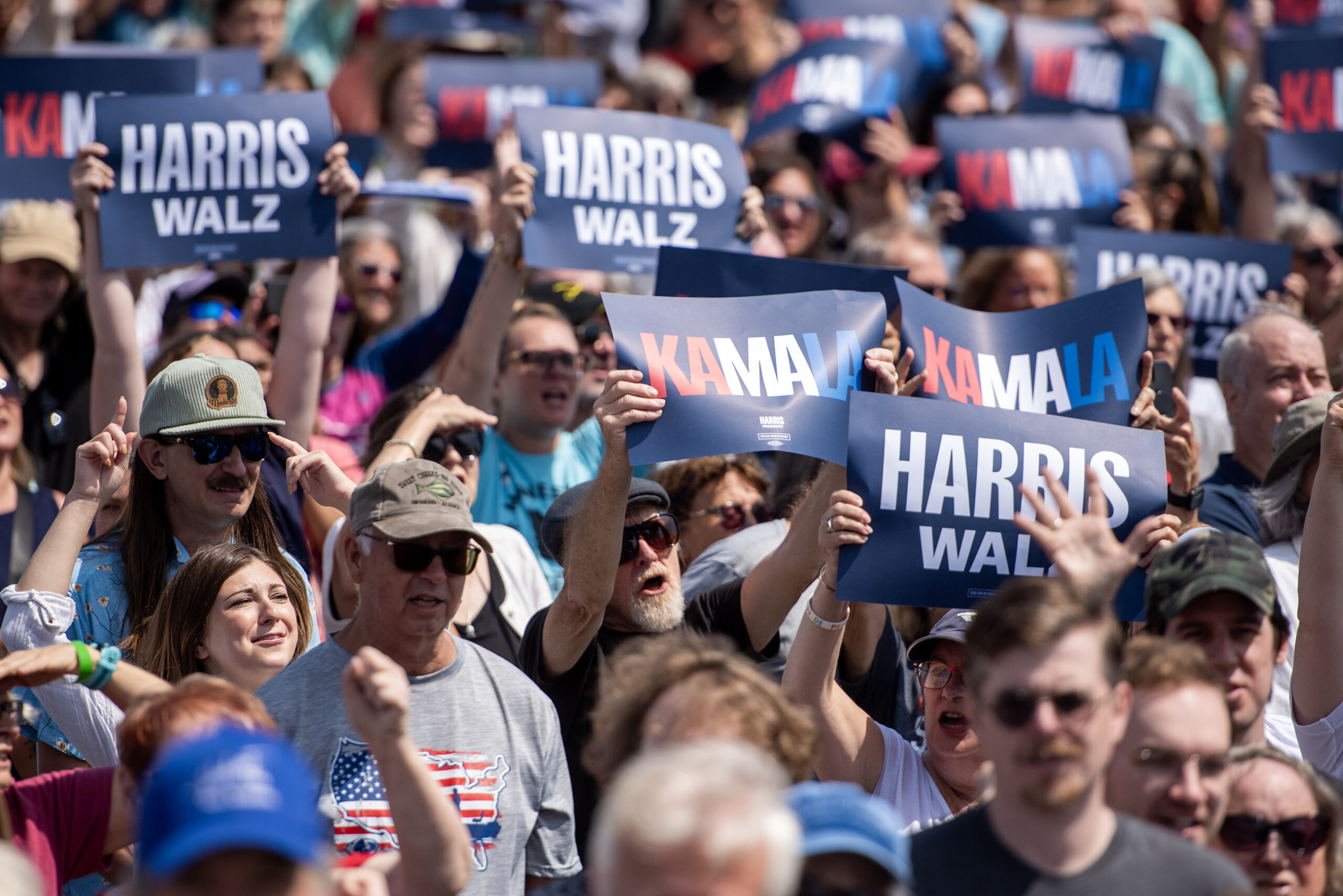
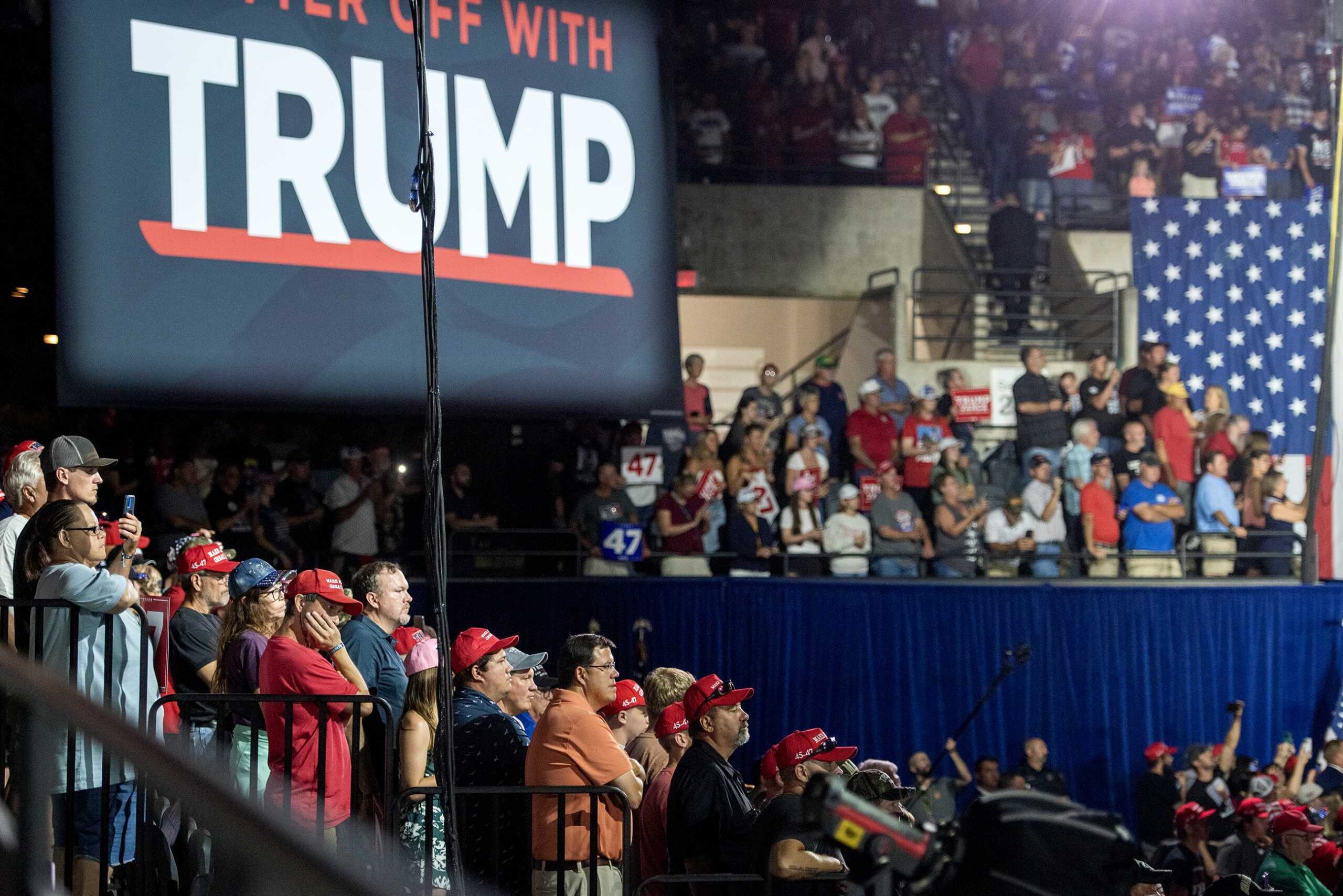
Gap narrows between Baldwin and Hovde in US Senate contest
In the closely watched U.S. Senate race, incumbent Democratic Sen. Tammy Baldwin leads her Republican opponent, businessman Eric Hovde, but the gap between the two has narrowed.
Among registered voters, Baldwin leads 52-48, and among likely voters, she leads 52-48. In last month’s survey, she led 53-46 percent among registered voters.
If voters are given the option of registering as undecided, Baldwin leads 48-44, with 8 percent of voters saying they are undecided. That also marks a decrease in voters who identify as undecided, following Hovde officially clinching the Republican nomination in the August primary election.
Baldwin’s Senate seat is one of several that Democrats are defending as they seek to maintain their edge in that chamber. Her favorability rating is 47 percent, and her unfavorability rating is 46. Hovde’s favorability rating is 34 percent, and unfavorability rating is 43 percent.
Hovde’s name recognition has increased substantially from the start of his campaign. In January, 82 percent of voters said they held no opinion of him; that’s now down to 22 percent.
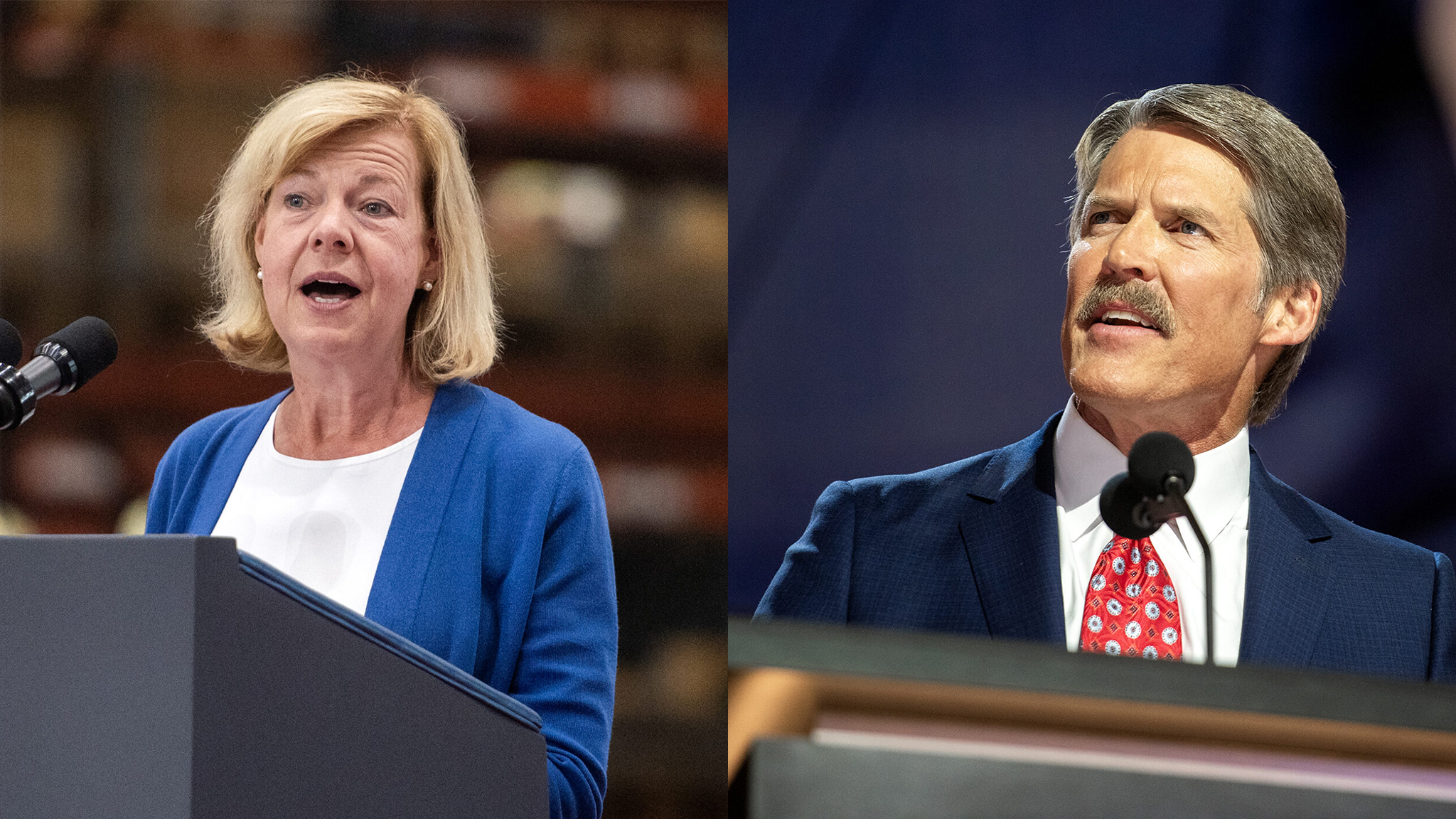
Wisconsin Public Radio, © Copyright 2025, Board of Regents of the University of Wisconsin System and Wisconsin Educational Communications Board.

